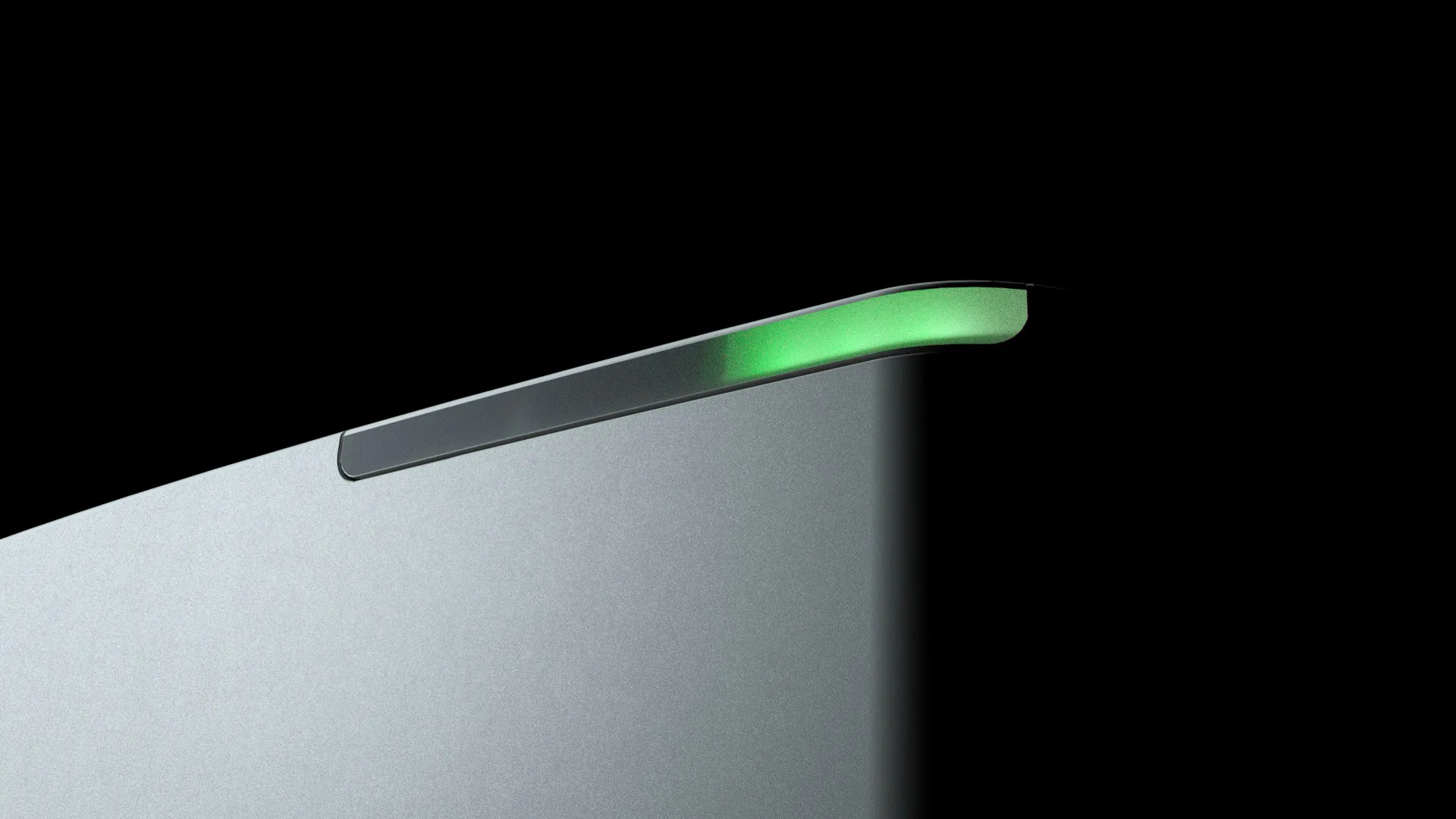

Aurora
Key Features and Benefits of Aurora
Minimal quantities of precious samples are no longer a limitation
- 50uL of sample at 0.1mg/mL is all you need for highly reproducible data
The secondary structure characterization tool for all your applications
- Characterize the HOS of a wide range of biomolecules including proteins, peptides, antibodies, ADCs, and AAVs by measuring structural changes due to buffer/pH/formulation, stress, point mutations, binding partners, and storage conditions.
- Gain insights into oligonucleotide structure changes due to ligand binding or formulation for applications that include the development of RNA therapeutics.
- Save time and money by collecting spectral data, under experimentally/therapeutically relevant conditions; no need to buffer exchange or dilute prior to measuring.
Benchtop-friendly Design
- Space-saving, all-in-one analytical unit with integrated touchscreen.
- Intuitive user interface provides at-a-glance-determination of run status.
Complete automation from sample analysis to data processing
- Reduce user error with minimal sample manipulations
- Monitor the critical relationship between structure and function in less time, with higher-quality data
- Simple automation minimizes training and removes the need for dedicated super users.
- No spectroscopy expertise required- delta software analyzes the data and provides meaningful conclusions.
The BENEFITS of measuring HIGHER ORDER STRUCTURE
- Track and maintain the critical relationship between structure and function.
- Identify conditions and processes that introduce undesired structural changes or aggregation.
- Test mechanistic hypotheses behind changes in activity and stability with structural information.
- Publish sooner and finish projects on-time with high repeatability and sensitivity minimizing inconclusive results and reliance upon orthogonal techniques.
The Benefits of Microfluidic Modulation Spectroscopy (MMS)
What is MMS technology?
Microfluidic Modulation Spectroscopy (MMS) combines a Quantum Cascade Laser, a microfluidic flow cell, and a powerful software package to produce high-resolution secondary structure information about your biomolecules of interest.
This novel and fully-automated technique generates ultra-sensitive and precise structural measurements of your biomolecules, including proteins, AAVs, biotherapeutics, and binding events, such as changes to RNA structure due to ligand binding. Validate data generated through protein structure prediction or RNA secondary structure prediction. MMS generates a high-resolution, 1 wavenumber spacing, differential absorbance spectrum across the Amide I region.
MMS directly addresses the limitations of traditional spectroscopic methods by enabling direct, label-free analysis over a wide concentration range in complex buffer formulations, without the need to buffer exchange or dilute your precious samples.
Why MMS Technology?
- Accurate and reproducible measurements across a broad concentration range from 0.1mg/mL to >200mg/mL.
- Real-time buffer/background subtraction enables structural analysis under relevant conditions, without needing to buffer exchange.
- High-resolution IR spectra of Amide I region.
- Walkaway automation with the convenience of a standard 96-well plate.
How MMS adds value to your research
By incorporating MMS into your suite of analytical tools, you will add the value of monitoring stability, structure, similarity, and intermolecular aggregation - all measured from a single automated run, with only one drop of sample and analyzed with a simple, state-of-the-art spectral analysis engine.
The Benefits of Microfluidic Modulation Spectroscopy (MMS)
What is MMS technology?
Microfluidic Modulation Spectroscopy (MMS) combines a Quantum Cascade Laser, a microfluidic flow cell, and a powerful software package to produce high-resolution secondary structure information about your biomolecules of interest.
This novel and fully-automated technique generates ultra-sensitive and precise structural measurements of your biomolecules, including proteins, AAVs, biotherapeutics, and binding events, such as changes to RNA structure due to ligand binding. Validate data generated through protein structure prediction or RNA secondary structure prediction. MMS generates a high-resolution, 1 wavenumber spacing, differential absorbance spectrum across the Amide I region.
MMS directly addresses the limitations of traditional spectroscopic methods by enabling direct, label-free analysis over a wide concentration range in complex buffer formulations, without the need to buffer exchange or dilute your precious samples.
Why MMS Technology?
- Accurate and reproducible measurements across a broad concentration range from 0.1mg/mL to >200mg/mL.
- Real-time buffer/background subtraction enables structural analysis under relevant conditions, without needing to buffer exchange.
- High-resolution IR spectra of Amide I region.
- Walkaway automation with the convenience of a standard 96-well plate.
How MMS adds value to your research
By incorporating MMS into your suite of analytical tools, you will add the value of monitoring stability, structure, similarity, and intermolecular aggregation - all measured from a single automated run, with only one drop of sample and analyzed with a simple, state-of-the-art spectral analysis engine.
delta- The Key to Optimal Spectral Analysis
The analytical engine behind the MMS hardware is delta, the processing software with an easy-to-use interface designed to generate high-quality, comparative spectral results to inform you about the structure of your biomolecules.
- Automatic generation of differential, background-subtracted spectra with no subjective intervention
- Intuitive user interface for analysis of IR spectra including second derivative analysis, similarity by area of overlap, weighted spectral difference (WSD), principal component analysis (PCA), and higher order structure (HOS)
- Easily compare HOS and the similarity profiles for all samples, tracking the parameters that are most relevant to your study
The analytical engine behind the MMS hardware is delta, the processing software with an easy-to-use interface designed to generate high-quality, comparative spectral results to inform you about the structure of your biomolecules.
- Automatic generation of differential, background-subtracted spectra with no subjective intervention
- Intuitive user interface for analysis of IR spectra including second derivative analysis, similarity by area of overlap, weighted spectral difference (WSD), principal component analysis (PCA), and higher order structure (HOS)
- Easily compare HOS and the similarity profiles for all samples, tracking the parameters that are most relevant to your study

Accessories
Request a Demo Today!
MMS offers unparalleled efficiency in bioprocess analytics, allowing for real-time protein concentration monitoring and minimizing workflow disruptions. This provides researchers and biopharmaceutical manufacturers with faster, more reliable structural insights to optimize formulation and stability studies.
Related Products



